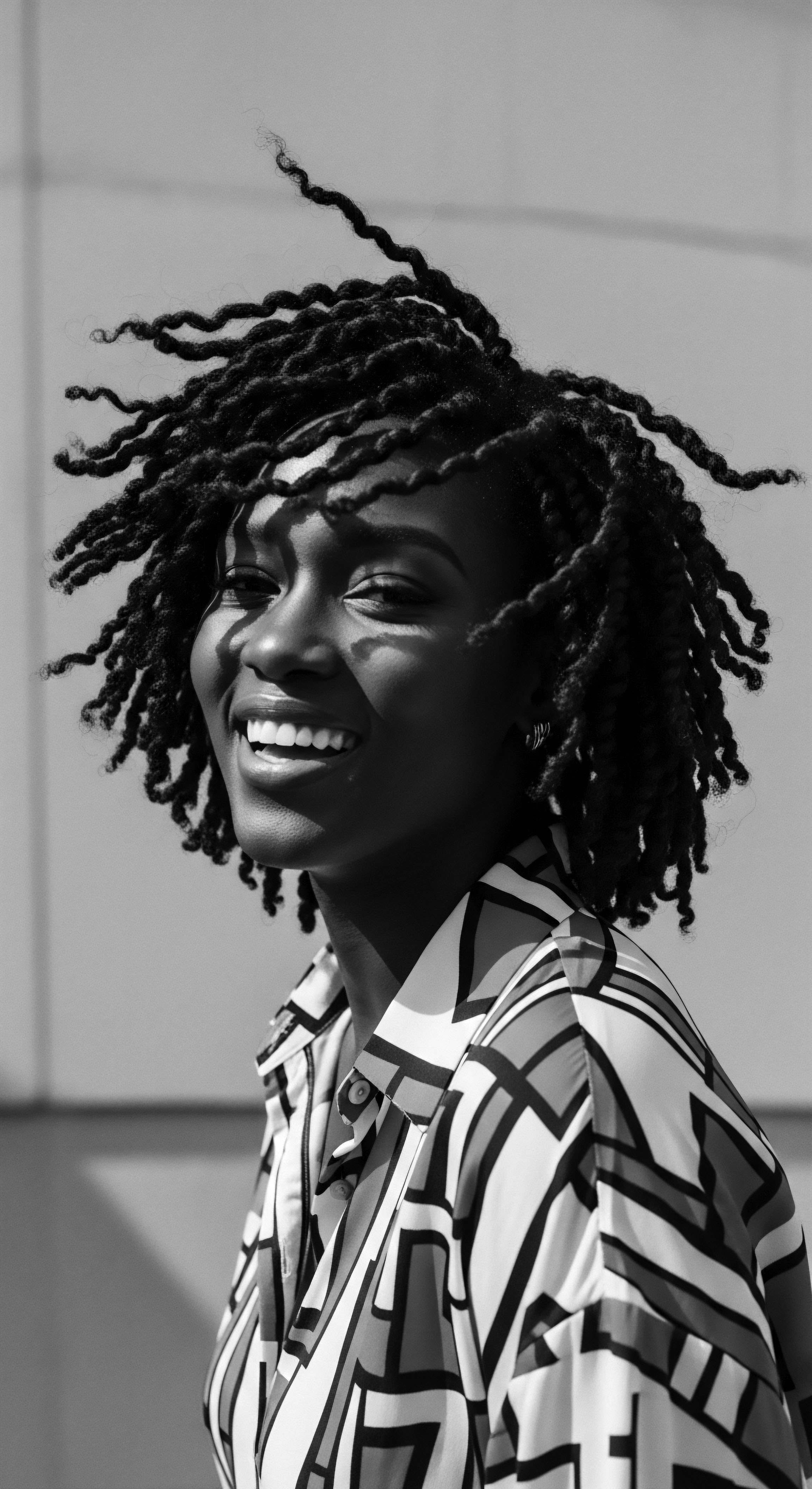
Roots
To the keepers of ancestral wisdom, those whose coils and curls carry the echoes of generations, this exploration unwraps the profound lineage of textured hair protection. Your strands, more than mere adornment, are living archives, holding the stories of ingenuity, resilience, and deep connection to the earth. We stand at the precipice of understanding how ancient hands, guided by necessity and reverence, shielded these crowns from the sun’s relentless gaze, the wind’s drying whisper, and the dust of forgotten paths. This is not a mere recounting of styles, but a journey into the very soul of a strand, a testament to how biological truths met cultural brilliance in ages past.
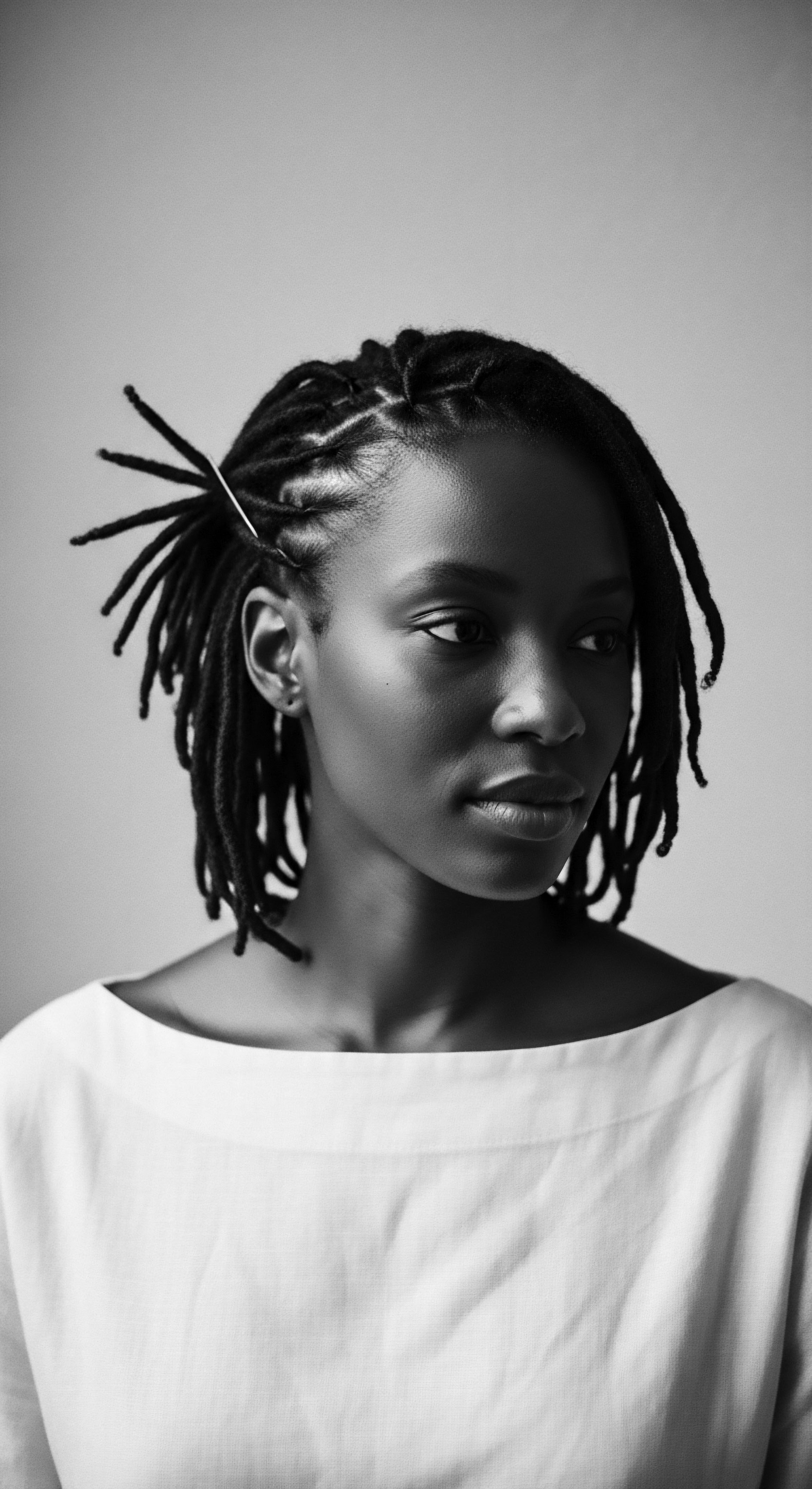
The Ancestral Strand’s Blueprint
The inherent architecture of textured hair, with its elliptical shaft and numerous bends, presents a unique biological profile. This structure, while contributing to its magnificent volume and strength, also means a natural inclination towards dryness due to the slower travel of sebum down the coiled path. Ancient peoples, though without microscopes or chemical analysis, perceived these characteristics through lived experience and keen observation. They understood the hair’s vulnerability to environmental aggressors long before modern science articulated the effects of UV radiation or arid climates.
The very shape of the hair, often described as kinky, coily, or curly, meant that moisture, a life-giver for these strands, would escape more readily if not intentionally preserved. This foundational understanding, passed through oral tradition and practical application, informed every protective measure.
Consider the climate across vast stretches of Africa, the ancestral homeland for much of the world’s textured hair. Regions with intense sun, low humidity, and abrasive winds posed constant challenges. The need to safeguard the scalp from direct solar exposure and to prevent moisture evaporation from the hair itself was paramount. Early practices were thus born from an intimate dialogue with the natural world, observing how plants thrived or withered, how animal skins offered defense, and how communal living necessitated healthy, manageable hair for daily life.
Ancient protective styles were not merely aesthetic choices; they were profound acts of care, born from an intuitive understanding of textured hair’s biological needs and the environmental forces at play.
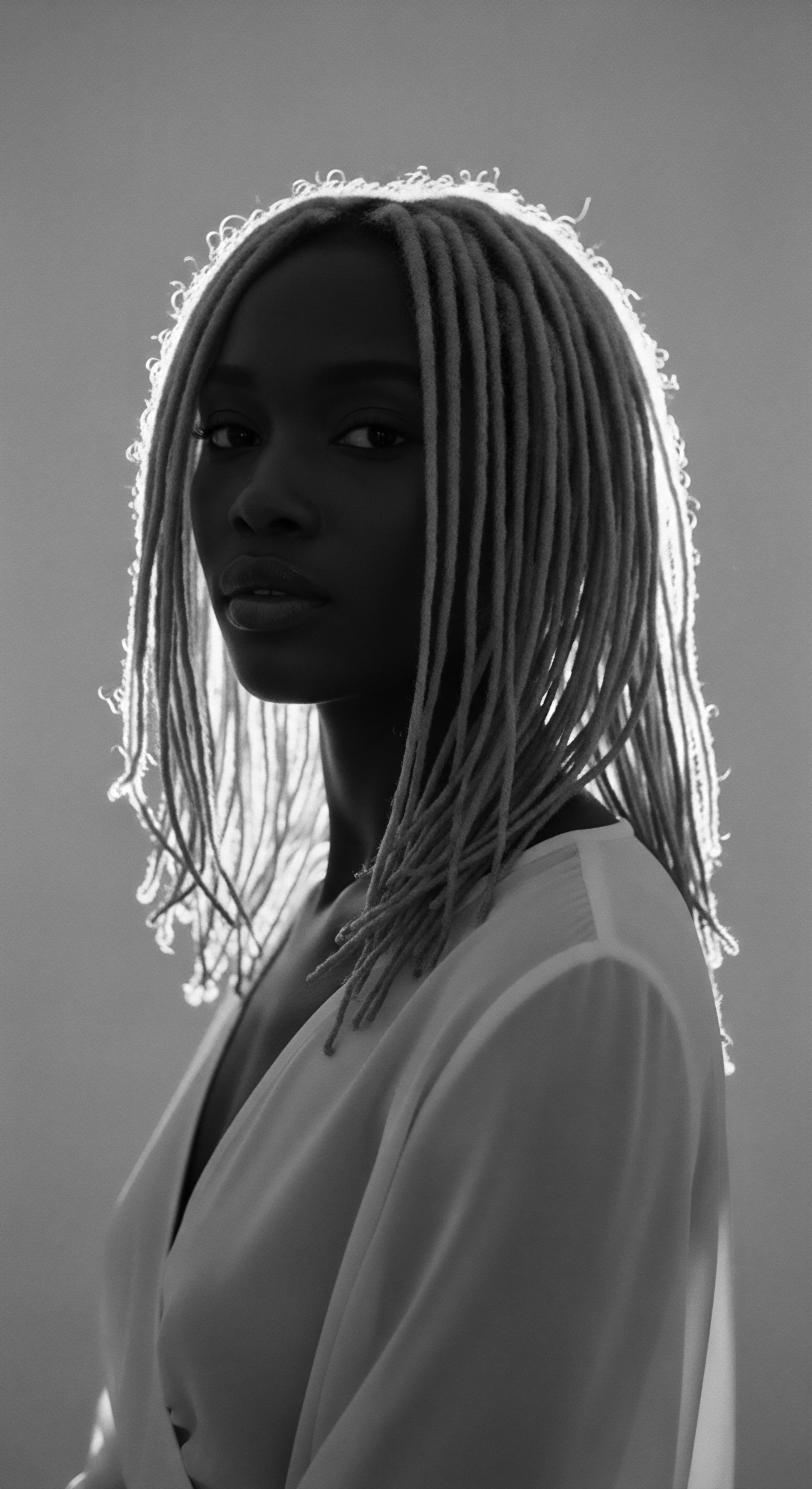
Elemental Defense and Hair’s Design
The very structure of textured hair, characterized by its varying curl patterns and often higher porosity, meant it could be susceptible to breakage and moisture loss when left exposed to the elements. The sun, a powerful life source, could also act as a drying agent, weakening the hair’s protein bonds. Wind could tangle and abrade strands, leading to mechanical damage. Dust and particulate matter, prevalent in many ancient environments, could settle on the hair, creating dullness and requiring frequent, potentially damaging, cleansing.
Ancient communities recognized these challenges. They devised methods that served as living shields, physically enclosing the hair or fortifying it with natural substances.
From the Sahel to the Great Lakes , the solutions were diverse yet unified by a common goal ❉ preservation. The techniques often minimized manipulation, allowing the hair to rest and retain its inherent moisture. This practical wisdom, honed over millennia, stands as a testament to the sophisticated understanding ancient cultures held regarding their environment and the unique needs of their hair.
| Hair Vulnerability Moisture Loss |
| Environmental Challenge Arid Air, Direct Sun |
| Ancient Protective Response Oiling, Butters, Enclosed Styles |
| Hair Vulnerability Mechanical Damage |
| Environmental Challenge Wind, Dust, Daily Activity |
| Ancient Protective Response Braiding, Twisting, Coiling |
| Hair Vulnerability Scalp Exposure |
| Environmental Challenge Intense Sun, Heat |
| Ancient Protective Response Head Wraps, Wigs, Densely Packed Styles |
| Hair Vulnerability These responses illustrate a deep, practical wisdom in safeguarding textured hair through ancestral practices. |

Ritual
Stepping into the domain of ancient hair care rituals reveals not just a collection of techniques, but a vibrant tableau of community, knowledge transfer, and mindful attention. For those who seek a deeper connection to the ways our ancestors honored their textured strands, this segment illuminates the purposeful actions that shaped protective styles. These were not quick fixes, but patient, deliberate acts, often shared within family circles, reinforcing bonds and preserving ancestral wisdom. The very act of styling became a ceremony, a moment of presence and care that resonated through daily life.
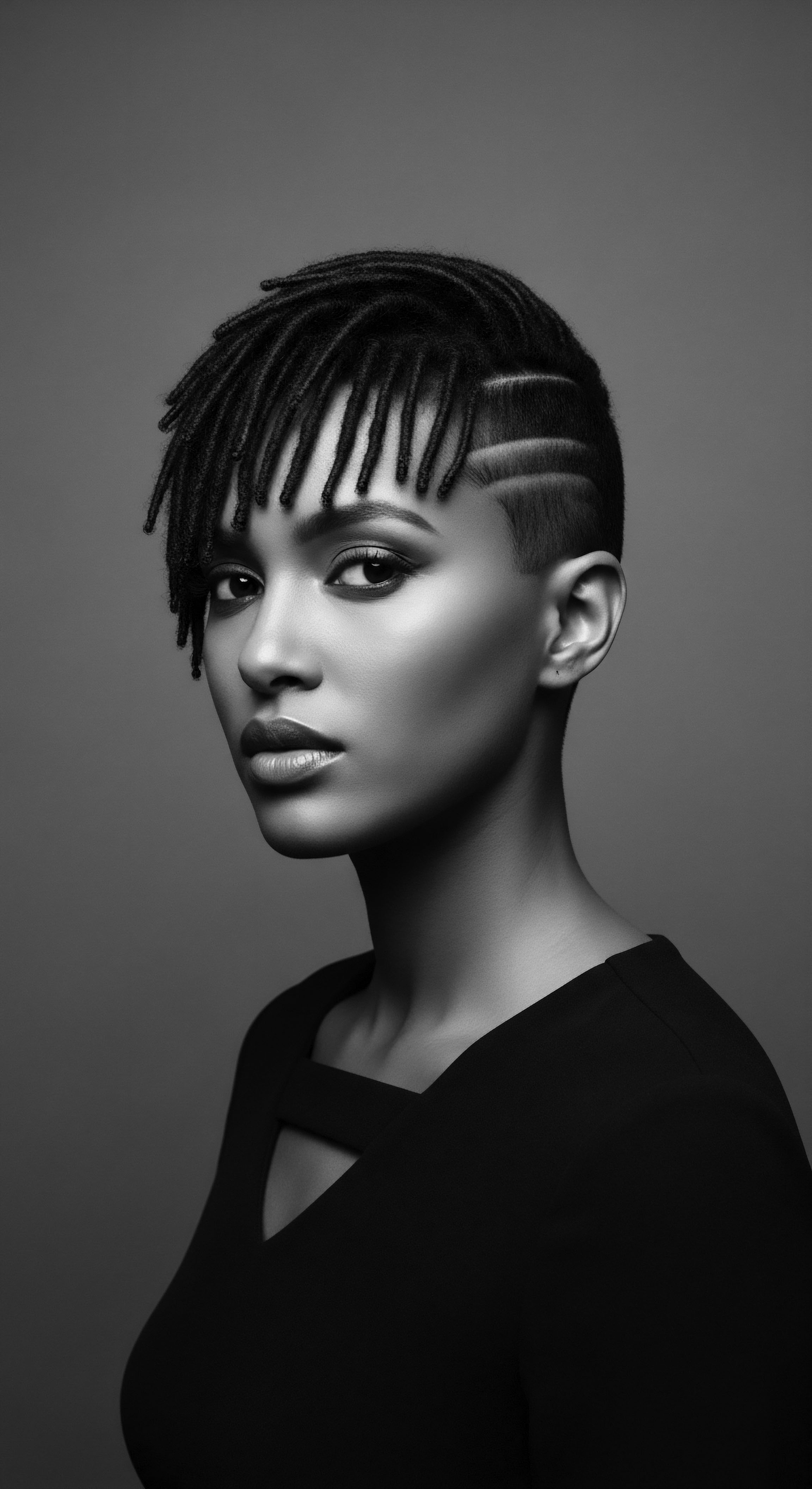
The Artistry of Ancient Protective Styles
Ancient civilizations across Africa developed a rich lexicon of protective styles, each serving a dual purpose of aesthetic expression and environmental defense. These styles, whether intricate or deceptively simple, were crafted to minimize manipulation and exposure to harsh external elements, allowing the hair to thrive.
- Braids ❉ Perhaps the most universal and enduring protective style, braids were foundational. From the tight, flat-to-the-scalp cornrows seen in ancient rock paintings to the voluminous box braids of the Nile Valley , these configurations safeguarded hair from breakage and environmental assault. The meticulous sectioning and interlocking of hair strands created a robust shield against wind, dust, and sun. In some West African societies, the specific patterns of braids conveyed social signals, including marital status, age, wealth, or tribal affiliation. The time spent braiding also served as a vital communal activity, a space for storytelling and intergenerational teaching.
- Twists ❉ Similar to braids, two-strand twists or three-strand twists offered another effective method of gathering and protecting hair. Styles like Senegalese twists and Passion twists , though gaining modern popularity, hold roots in long-standing African traditions. They enclose the hair, reducing friction and allowing natural oils to distribute more evenly along the strand.
- Locs ❉ A powerful symbol of spiritual and cultural identity, locs also stand as an ancient protective measure. Formed by matting sections of hair, they create dense, rope-like strands that shield the hair from external forces. In indigenous African communities, locs were often formed with natural earth materials like ground ochre, goat hair, and butter, symbolizing a connection to the earth and ancestors. This practice speaks to a holistic understanding of hair as an extension of the self and the environment.
- Bantu Knots ❉ These coiled, knot-like formations, named after the Bantu-speaking peoples of Africa, are another example of ancient protective styling. They involve twisting sections of hair tightly and then coiling them into compact knots against the scalp. This method fully tucks away the hair, offering maximum protection from exposure and minimizing tangles.
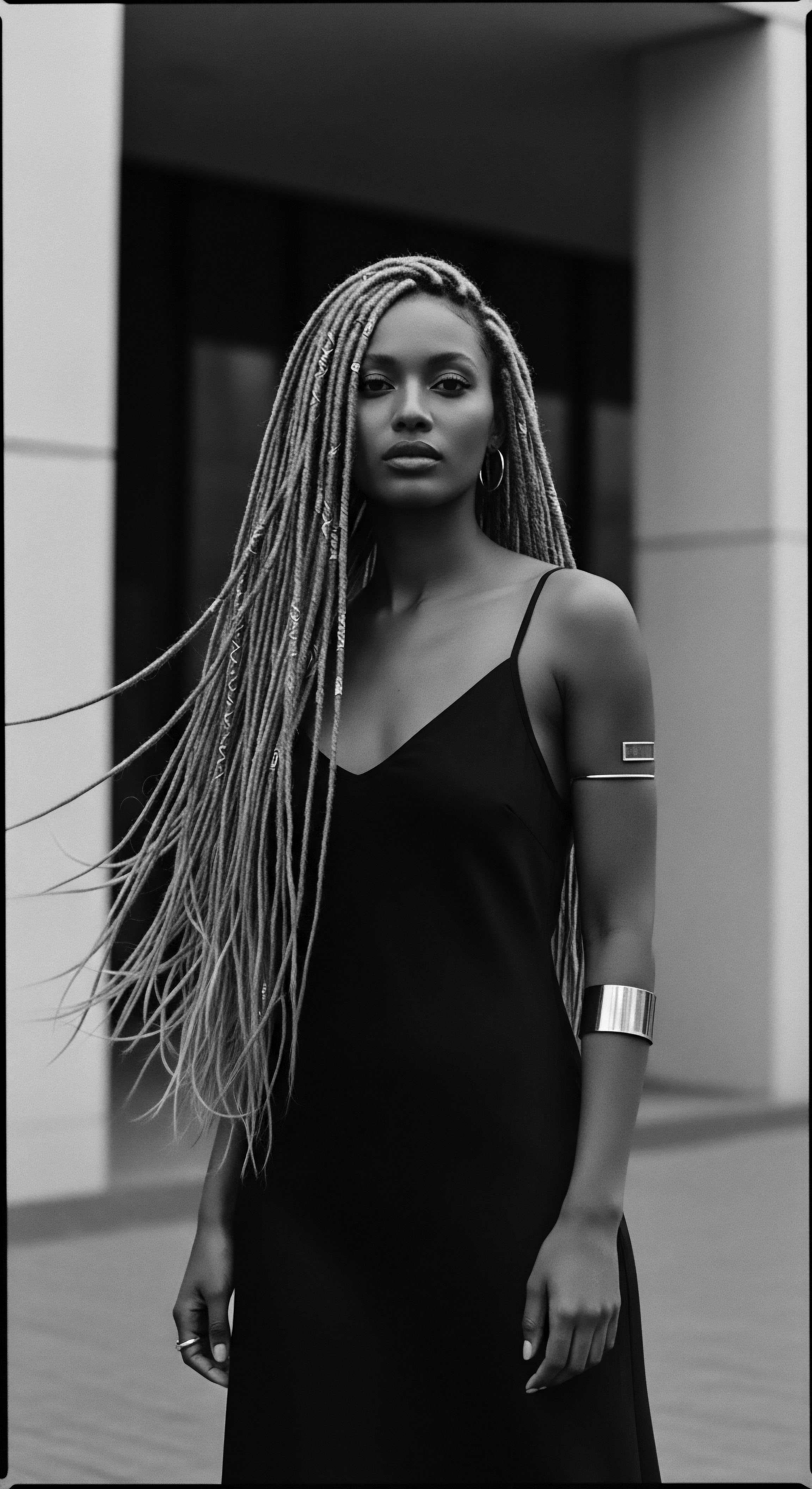
Adornment and Defense ❉ The Role of Wigs and Extensions
Beyond natural hair manipulations, ancient cultures, notably Ancient Egypt , employed wigs and hair extensions as sophisticated protective solutions. These were not simply decorative; they served practical purposes in a desert climate. Wigs, often crafted from human hair, wool, or plant fibers, were intricately braided and affixed with beeswax. They shielded the scalp from the intense sun and dust, provided a hygienic alternative to constantly exposed hair, and were symbols of status and religious devotion.
Hair extensions, too, found their place, particularly for those who could not afford elaborate wigs. They added volume and length, while also providing an additional layer of defense for the wearer’s natural hair. The widespread use of these hairpieces underscores a deep-seated desire to maintain healthy, protected hair, even if it meant augmenting natural growth.
The ingenuity of ancient hair care practices demonstrates a profound understanding of hair’s vulnerability and a dedication to its preservation through physical shielding and meticulous manipulation.

The Apothecary of the Ancients ❉ Natural Ingredients
The effectiveness of ancient protective styles was greatly amplified by the consistent application of natural ingredients, derived from the surrounding environment. These botanical and animal-derived substances provided lubrication, moisture, and a barrier against environmental damage.
The Himba people of Namibia offer a compelling historical example of this integrated approach. They traditionally apply a paste known as Otjize, a mixture of butterfat and ochre, to their hair and skin. This application not only gives their hair its distinctive reddish hue but also serves as a potent sunscreen, moisturizer, and cleanser, shielding their strands from the arid climate and harsh sun. This practice, passed down through generations, highlights a holistic view of hair care intertwined with cultural identity and environmental adaptation.
A closer examination of ingredients used reveals a remarkable ethnobotanical wisdom:
- Oils and Butters ❉
- Shea Butter ❉ Widely used across West Africa for centuries, shea butter is rich in fatty acids and vitamins, offering deep moisturization and protection from sun and environmental damage. It was, and remains, a staple for nourishing textured hair.
- Castor Oil ❉ Prominent in Ancient Egypt, castor oil was prized for its moisturizing and strengthening properties, often blended with honey and herbs for hair masks.
- Almond Oil ❉ Another Egyptian staple, used for hydration and shine.
- Olive Oil ❉ A common ingredient in ancient Greek and Mediterranean hair care, known for smoothing hair, preventing frizz, and adding sheen.
- Coconut Oil ❉ A key ingredient in Ayurvedic hair traditions, used for cleansing, conditioning, and growth.
- Camellia Oil ❉ Utilized in ancient China for luster and strength.
- Animal Fats ❉ In some regions, particularly during times of hardship or specific cultural practices, animal fats and butters were used for hair conditioning and protection.
- Clays and Earth Pigments ❉
- Ochre ❉ Beyond the Himba, various African tribes used crushed red stone and other earth materials mixed with oils to style and protect hair, often reflecting beliefs and social standing. These provided physical barriers and natural color.
- Clays ❉ Some indigenous peoples used clays for cleansing and purifying the hair and scalp.
- Herbs and Plant Extracts ❉
- Henna ❉ Used in Ancient Egypt and Rome for coloring, strengthening, and conditioning hair, and even for treating hair loss.
- Amla (Indian Gooseberry) ❉ Revered in Ayurveda for its vitamin C and antioxidant content, forming a protective barrier around the hair shaft.
- Shikakai ❉ A natural cleanser in ancient India, removing impurities without stripping hair.
- Yucca Root ❉ Used by Indigenous peoples of the Americas for cleansing.
- Rice Water ❉ A traditional Chinese practice for hair luster and strength.
- Various Medicinal Plants ❉ Ethnobotanical studies reveal a multitude of African plants used for hair health, addressing issues like hair loss, dandruff, and general conditioning. Examples include Origanum compactum, Rosa centifolia, Allium cepa, Allium sativum, Matricaria chamomilla, and Lawsonia inermis .
- Beeswax and Resins ❉
- Beeswax ❉ Employed in Ancient Egypt for styling wigs and extensions, helping to hold hair in place and provide a protective coating.
- Plant Resins ❉ Sometimes combined with beeswax or oils for styling and protective purposes.
These ingredients, often combined in specific formulations, worked synergistically with the chosen styles to create a comprehensive shield against environmental wear, preserving the vitality of textured hair for generations. The legacy of these ancient rituals continues to guide contemporary hair care practices, underscoring the enduring power of natural remedies.
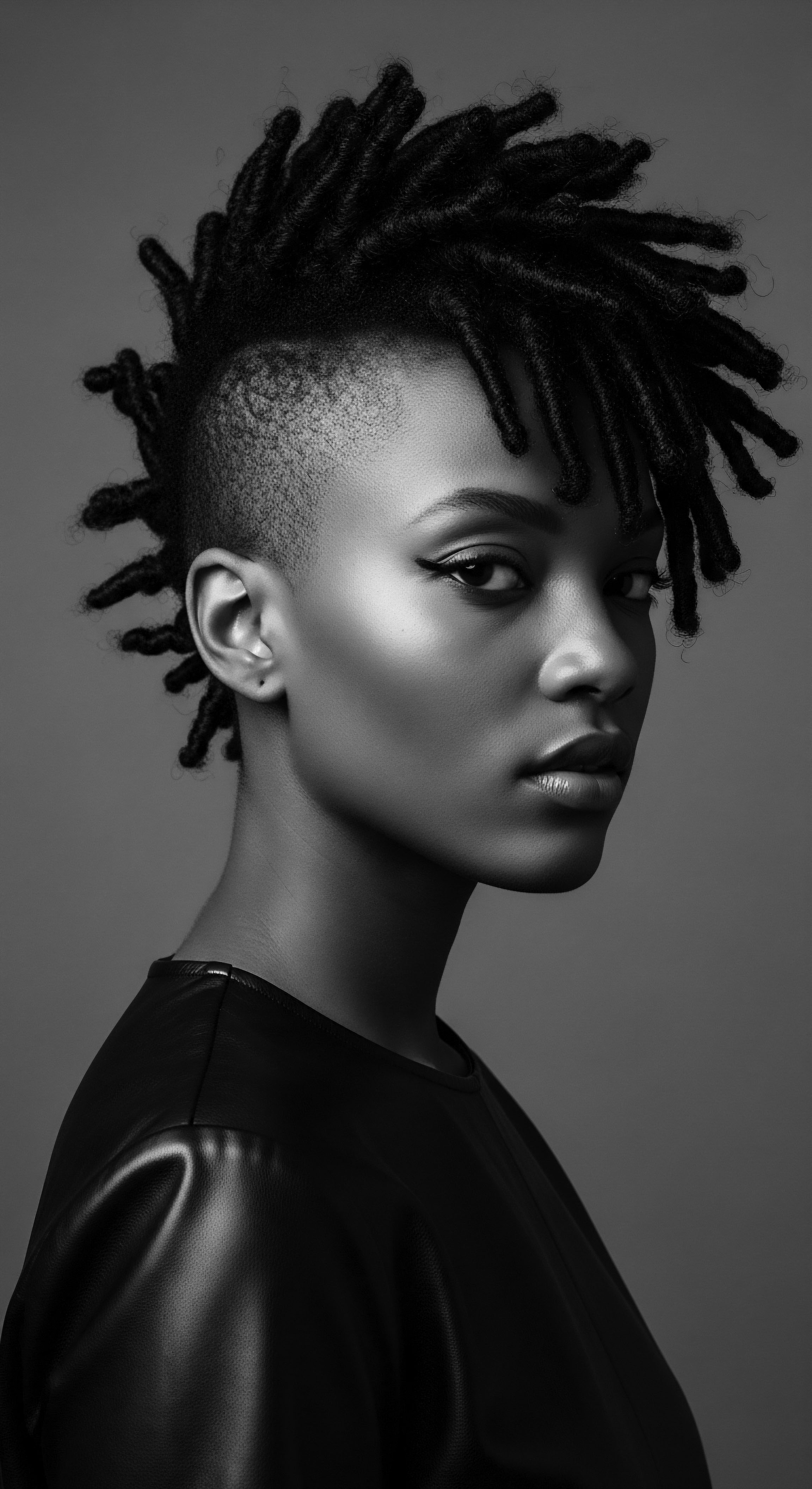
Relay
How do the echoes of ancestral wisdom reverberate through the helix of our modern understanding? This section invites a deeper contemplation of how ancient protective styles, once born of immediate necessity and cultural expression, continue to shape our present and future relationship with textured hair. We peel back layers of time, discerning the scientific principles unknowingly applied by our forebears and recognizing the profound resilience of traditions that withstood immense historical pressures.
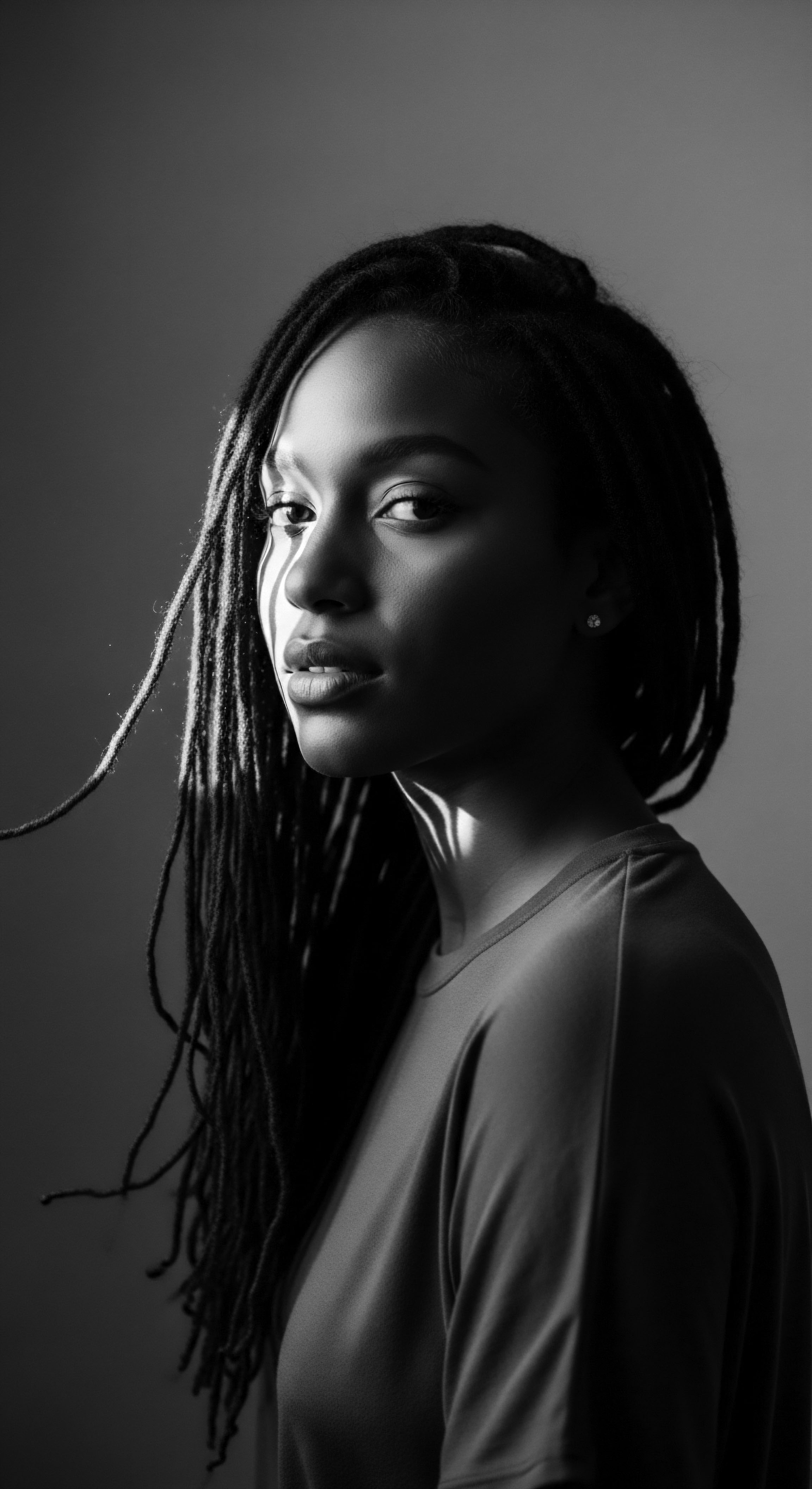
The Science Within Ancient Practices
The brilliance of ancient protective styles lies not just in their aesthetic appeal or cultural resonance, but in their inherent scientific efficacy. Modern trichology now validates what our ancestors knew through observation and inherited wisdom:
- Moisture Retention ❉ Coiled and curly hair, due to its structural characteristics, tends to lose moisture more readily than straighter textures. Ancient protective styles, by gathering hair into compact forms (braids, twists, locs, knots), significantly reduced the surface area exposed to drying air and wind. This physical enclosure helped to trap natural oils and applied emollients (like shea butter or castor oil), maintaining hydration levels within the hair shaft.
- Minimizing Mechanical Stress ❉ Daily manipulation, such as combing, brushing, and styling, can cause friction and breakage, particularly for delicate textured strands. Protective styles drastically reduce the need for such daily handling, giving the hair a period of rest and minimizing mechanical stress. This reduced manipulation directly contributes to length retention, as fewer strands break off.
- Environmental Shielding ❉ Beyond moisture, these styles acted as physical barriers against external elements. The sun’s ultraviolet rays can degrade hair proteins, leading to dryness and weakening. Densely packed styles and head coverings offered a degree of UV protection. Dust and airborne particles, which can accumulate and cause tangles or dullness, were also less likely to settle on hair that was tucked away. The Himba’s Otjize paste , for example, serves as a powerful sunscreen and environmental shield.
- Scalp Health ❉ Many ancient practices incorporated scalp oiling and massaging alongside protective styles. This nourished the scalp, promoted circulation, and addressed common scalp conditions, laying a healthy foundation for hair growth. The application of herbal remedies for issues like dandruff or hair loss further underscores this holistic approach.

Did Ancient Styles Offer Thermal Regulation?
The question of how hair affects thermoregulation, particularly in hot climates, has intrigued scholars. While dense hair might seem counterintuitive in heat, research suggests that scalp hair can reduce heat gain from solar radiation, especially for hominins with larger brains. This means that a full head of hair, or indeed, protective styles that create density, could have served as a natural insulator, shielding the scalp from direct sun and potentially reducing the body’s need for evaporative cooling in arid environments. This provides a scientific lens through which to appreciate the ancestral choices of maintaining and styling hair in ways that offered robust coverage.
The scientific principles of moisture retention, reduced mechanical stress, and environmental shielding were inherently woven into ancient protective hair practices, validating centuries of ancestral wisdom.

A Legacy Forged in Adversity
The heritage of textured hair care, particularly protective styling, carries profound historical weight. The transatlantic slave trade violently disrupted these ancestral practices. Enslaved Africans were often forcibly shorn of their hair upon arrival, a brutal act designed to strip them of identity, culture, and connection to their past. This deliberate erasure aimed to dismantle the very foundations of self and community that hair symbolized.
Despite this profound trauma, the resilience of these traditions is a powerful narrative. In the brutal conditions of slavery, protective styles took on new, covert functions. Braids, for instance, were sometimes used as maps for escape routes , their patterns encoding paths to freedom. Small grains and seeds were hidden within intricate styles, a means of preserving food and agricultural heritage.
This remarkable adaptation speaks to the indomitable spirit of those who held onto their heritage even in the face of dehumanization. The forced abandonment of traditional cleansing agents led to the use of readily available, albeit often harsh, substitutes like cooking oil, animal fats, and even kerosene, further damaging hair and reinforcing negative perceptions.
The post-slavery era and subsequent civil rights movements saw a reclamation of natural hair and protective styles as potent symbols of pride, resistance, and cultural identity. The Afro, braids, and locs became visible declarations of self-acceptance and a powerful rejection of imposed beauty standards. This ongoing journey underscores the enduring connection between hair, heritage, and the struggle for self-determination.
| Ancient Context Holistic care, cultural marker, environmental shield. |
| Colonial/Slavery Impact Forced shaving, identity stripping, loss of traditional products. |
| Modern Relevance Reclamation of identity, health-focused care, cultural celebration. |
| Ancient Context Natural ingredients (shea, castor, herbs) for nourishment. |
| Colonial/Slavery Impact Substitution with harsh, damaging substances. |
| Modern Relevance Renewed interest in natural, ancestral ingredients. |
| Ancient Context Communal styling as social ritual and knowledge transfer. |
| Colonial/Slavery Impact Disruption of communal practices. |
| Modern Relevance Hair salons as community hubs, online learning platforms. |
| Ancient Context The history of protective styles reflects a continuous journey of adaptation, resilience, and reclamation, deeply rooted in textured hair heritage. |
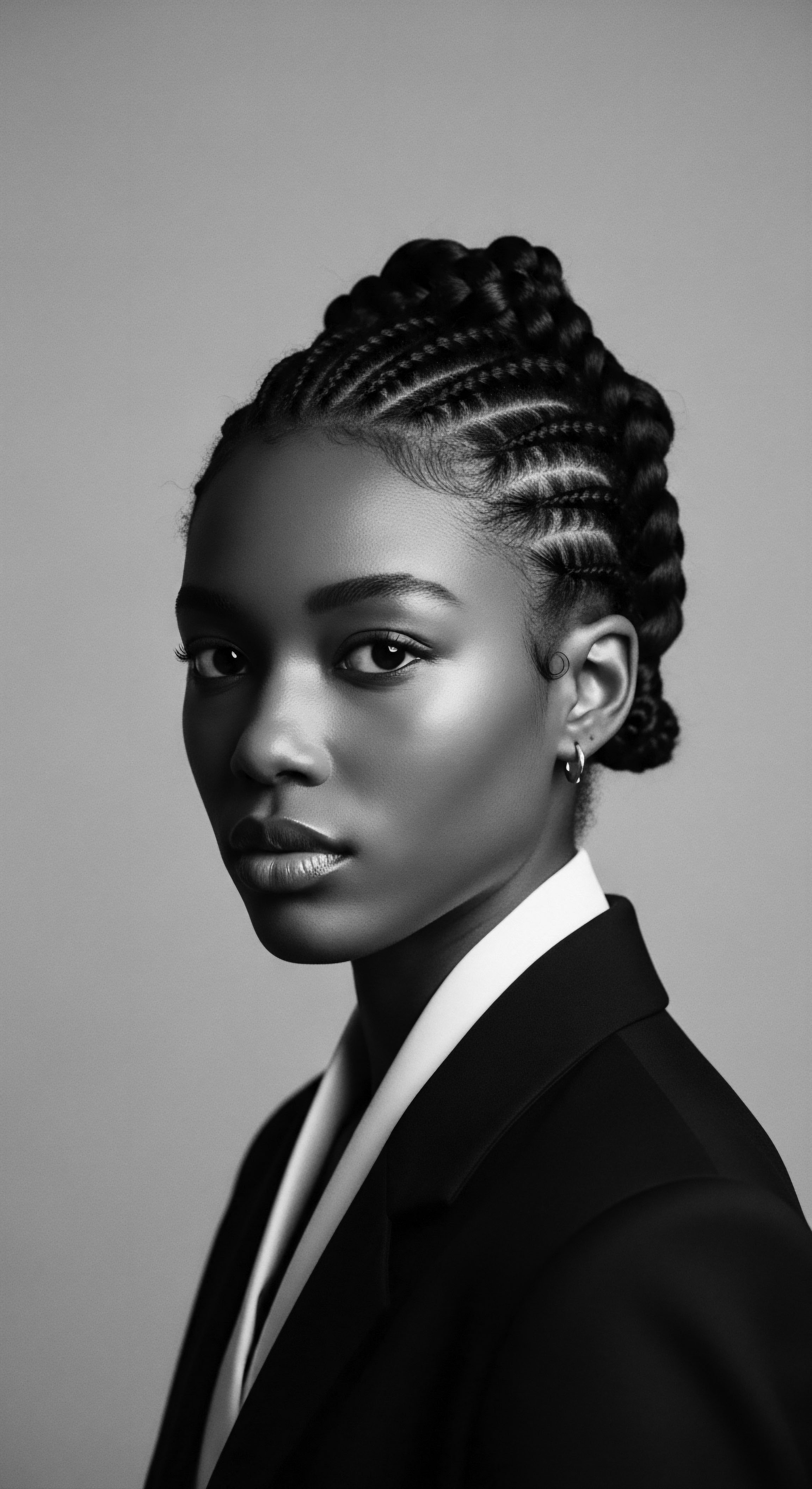
What Ancient Tools Supported These Practices?
The effectiveness of ancient protective styles and care rituals was also supported by a range of simple yet ingenious tools. While elaborate tools might be associated with later periods, the foundations were built upon practical implements:
- Combs ❉ From bone and wood in ancient times to more refined materials, combs were essential for detangling and sectioning hair for braids and twists. Archaeological finds from ancient Egypt include combs made of fish bones, dating back to predynastic times.
- Hairpins and Adornments ❉ Beyond their decorative role, pins and various adornments (beads, shells, amulets, gold, silver, pearls) helped secure styles, particularly elaborate updos or braided formations. In some cultures, these adornments also carried spiritual or protective meanings.
- Razors ❉ While protective styles kept hair long, shaving was also a practice in ancient Egypt, often for hygiene or as a mark of status, necessitating razors made of stone, copper, or bronze.
These tools, coupled with the skilled hands of communal stylists, formed the practical backbone of ancient hair care systems, allowing for the creation and maintenance of styles that offered both beauty and protection.

Reflection
The whispers of ancient protective styles, once carried on desert winds and through dense forests, now resonate within the very fiber of textured hair heritage. We discern a continuum of care, a legacy that transcends mere fashion and reaches into the core of identity and resilience. The ‘Soul of a Strand’ is truly a living archive, each coil and curl a testament to the ancestral brilliance that understood hair not as something to be tamed, but as a sacred extension of self, deserving of deliberate, thoughtful preservation. The ingenuity of those who shielded their hair from the elements, using what the earth provided and what communal hands could craft, continues to guide us.
This heritage reminds us that deep wisdom often lies in simplicity, in observation, and in the enduring bond between people, their environment, and the stories written in their hair. The journey of textured hair is an ongoing narrative of strength, beauty, and an unbroken connection to the past, shaping a future where every strand is honored.

References
- Chimbiri, K. N. (2021). The Story of Afro Hair, 5,000 Years of History, Fashion and Styles. Scholastic.
- Byrd, A. D. & Tharps, L. (2001). Hair Story ❉ Untangling the Roots of Black Hair in America. St. Martin’s Press.
- Sieber, R. & Herreman, F. (2000). Hair in African Art and Culture. Museum for African Art.
- Omotos, A. (2018). The Importance of Hair in Ancient African Civilizations. Journal of Pan African Studies, 11(7), 1-16.
- Mouchane, M. Taybi, H. Gouitaa, N. & Assem, N. (2024). Ethnobotanical Survey of Medicinal Plants used in the Treatment and Care of Hair in Karia ba Mohamed (Northern Morocco). E3S Web of Conferences, 492, 02002.
- Mbilishaka, O. Rooks, A. & Williams, S. (2020). Black Hair and Identity ❉ A Qualitative Study of African American Women’s Hair Practices and Self-Perception. Journal of Black Psychology, 46(3), 209-231.
- Leach, E. (1958). Magical Hair. The Journal of the Royal Anthropological Institute of Great Britain and Ireland, 88(2), 147-164.
